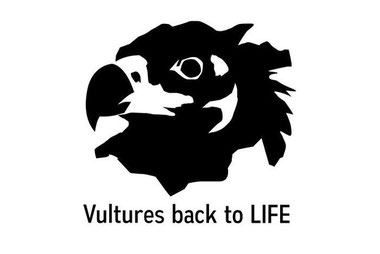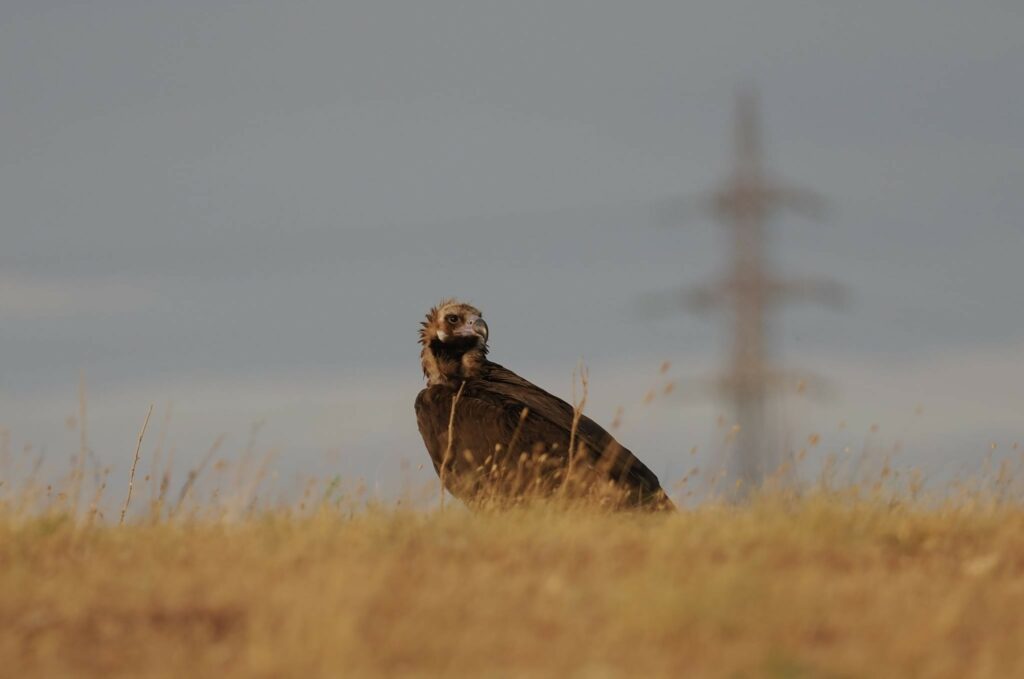
The Cinereous Vultures that were reintroduced in Bulgaria as part of the Vultures Back To LIFE project have been having many adventures, some surprising, in Bulgaria and abroad. What are their latest whereabouts?

Riga and Boyan
Riga was released by the hacking method in Kotel in 2018 and is probably the most ‘adventurous’ reintroduced bird. After her long autumn migration in 2019 from the Alps returning to the Balkans, Riga reached Messolonghi in southwest Greece where she stayed for the winter months. She escaped death in February 2020 during a mass poisoning incident that killed at least eleven Griffon Vultures in the region, causing a heavy blow to the largest colony of the species in mainland Greece. Colleagues from the Vultures Back To LIFE project were monitoring Riga during that time thanks to her GPS tag and even went to the field to check up on her. Thankfully, she survived that incident. Riga started heading north early last week together with a potential partner, who most probably stayed in the Eastern Rhodopes. Riga continued her journey north and reached her release site in Kotel Mountain on 17 April 2020. After travelling for 19 months, the reintroduced vulture will probably stay home for some time.
Boyan that was released by hacking in Kotel in 2018 has chosen to travel near Cankari in Turkey, north of Ankara soon after his release. He has remained in Cankari and has been exploring the wider region ever since.
Balkan, Marina, VCF Know-How and Zlosten

As well as releasing captive-bred birds, the Vultures Back to LIFE project is also releasing adult birds that the VCF transferred from rescue and rehabilitation centres in Spain. In 2018, 12 vultures came from Spain and in 2019, year ten more! Balkans (male), Marina (female), VCF Know-How (female) and Zlosten (male) are all originating from Spain. Balkan and VCF Know-How are the first two Cinereous Vulture ‘lovebirds’ in Bulgaria since the extinction of the species. Although Balkan had a competition with Zlosten, another released bird who was pretending to pair with VCF Know-How, in the end, it seems that Balkan won over VCF Know-How and together they formed the first pair. So far, the breeding behaviour observed between the two includes, ‘kisses’, courtship flights, and staying close to each other, especially overnight during roosting. The vultures also provide “presents” to each other like bones and sticks. Currently, the couple undertakes daily wanderings between Sliven and Kotel, and also travels to the Central Balkans, possibly looking for a nesting place. The team will continue to monitor the pair, and we will keep you updated.
Silven’s surprising movements
The Cinereous Vulture Silven is a Spanish wild-born bird released in 2019 in Kotel. He recently surprised the Vultures Back To LIFE team with his movements. He began heading north towards Romania when unexpectedly he made an eastwards turn and ended up in Ukraine. The nearest Cinereous Vulture colony there is in the Peninsula of Crimea counting about 18 breeding pairs. We are closely tracking the movements of Silven and are in contact with colleagues in Ukraine to help ensure that he survives this long and exhausting trip.
Cinereous Vultures in Bulgaria

The Cinereous Vulture was found everywhere in Bulgaria during the 19th and the beginning of the 20th century. But due to habitat loss, the widespread use of poisons to combat terrestrial predators, agricultural intensification, lack of food resources, and deliberate shooting of individuals, the species was driven to extinction. The last proven breeding pair nest was recorded in 1993 in the Cold Well area, during an expedition by Green Balkans experts. The only natural colony of the Balkans species is located in the Dadia National Park, Greece, where often single birds were observed visiting vulture feeding sites in the Eastern Rhodopes, reaching both the Balkan Mountains and the Kresna Gorge. In 2015, the Vultures Back To LIFE project was launched to bring the species back to the country.
Vultures Back to LIFE

Led by the wildlife conservation charity Green Balkans, with activities also implemented by the Fund for Wild Flora and Fauna, and bringing together partners from Bulgaria, Spain and Germany, Vultures Back to LIFE aims to reintroduce the cinereous or Eurasian black vulture to Bulgaria. The team will transfer and release around 60 birds, some from captive-breeding, but mostly coming from wildlife rehabilitation centers in Extremadura (Spain) into the wild in Bulgaria as well as creating supplementary feeding stations and improving populations of wild herbivores, improving the nesting conditions and creating artificial nest sites and tackling some of the major threats to vultures in the country such as insulating electricity pylons and illegal use of poison in the nature.




